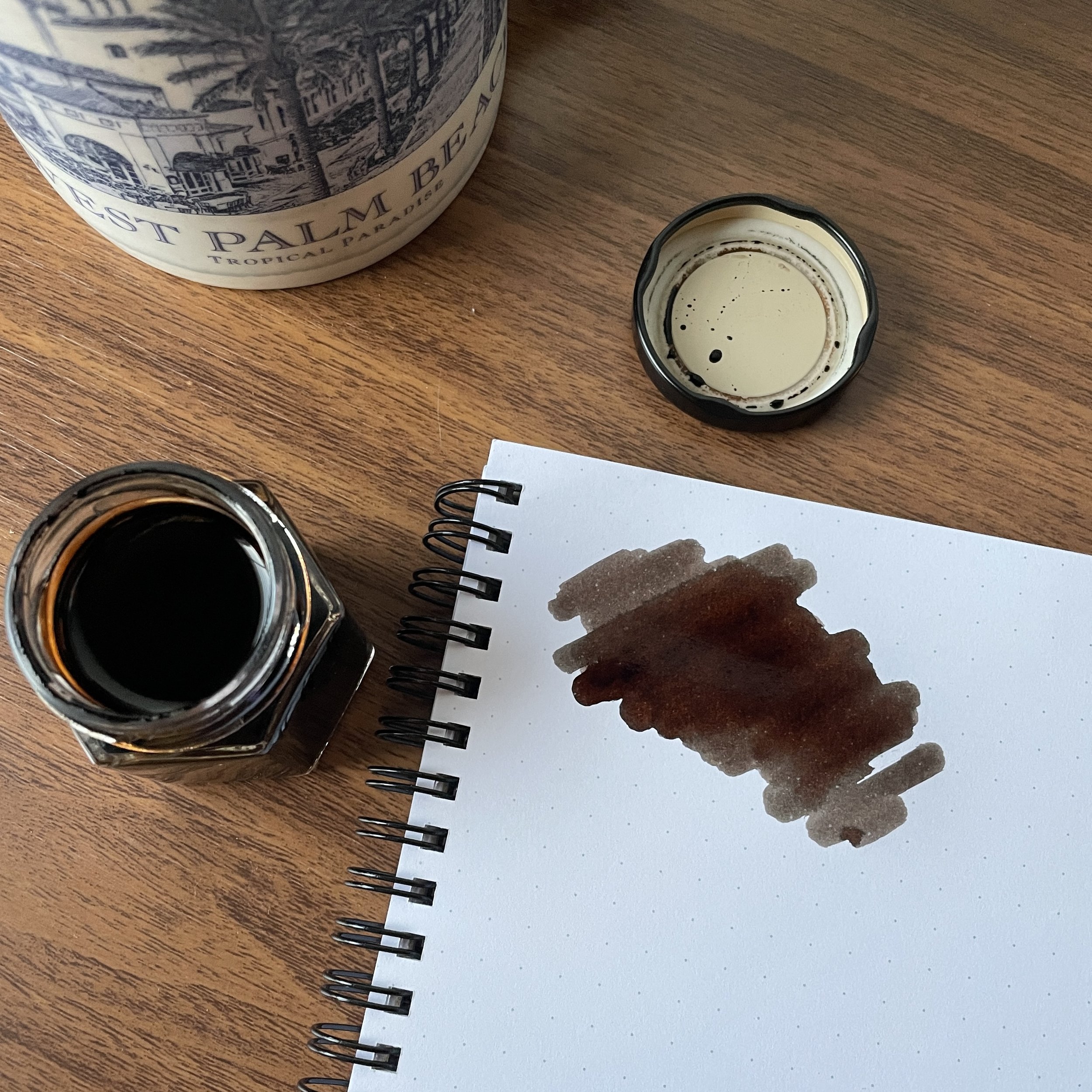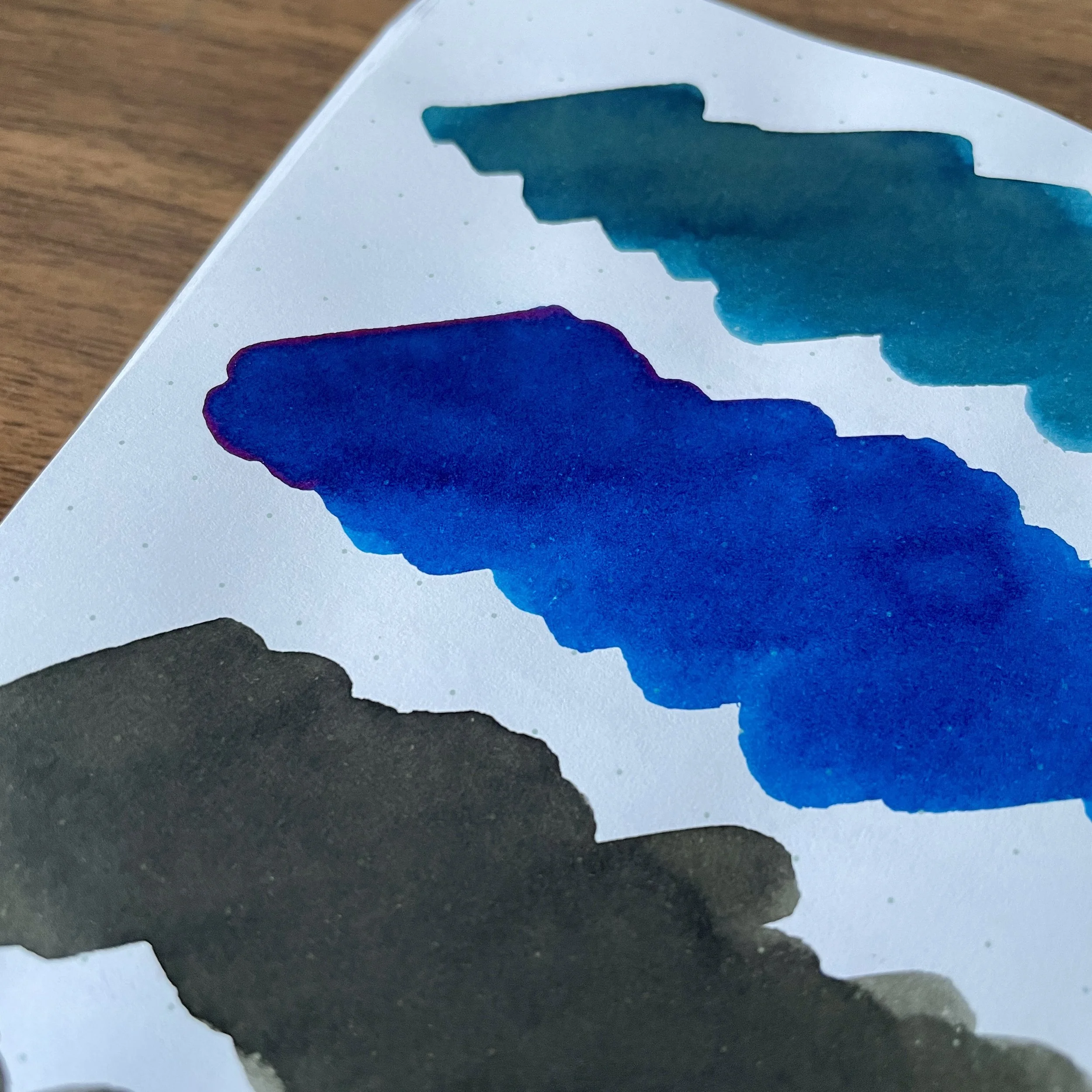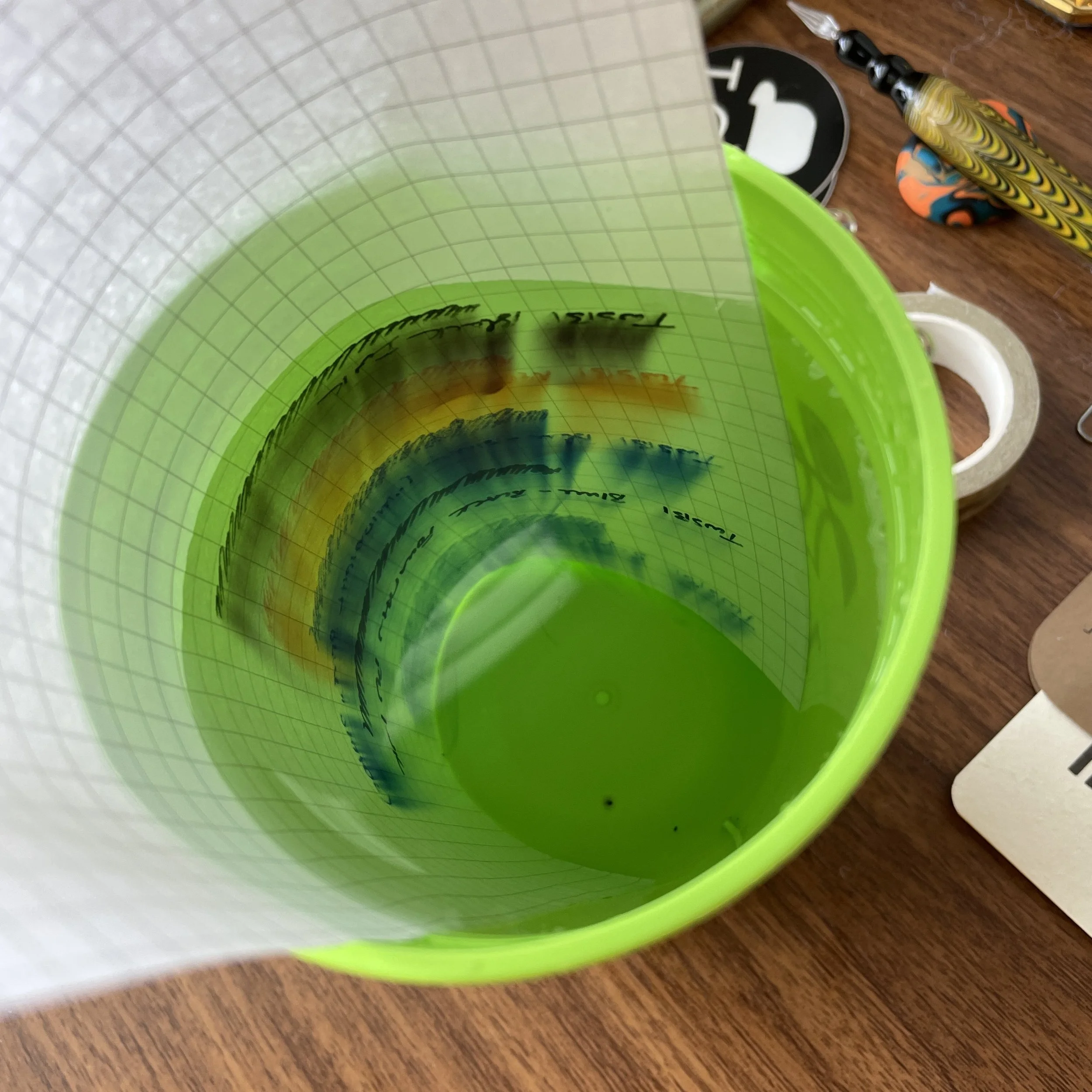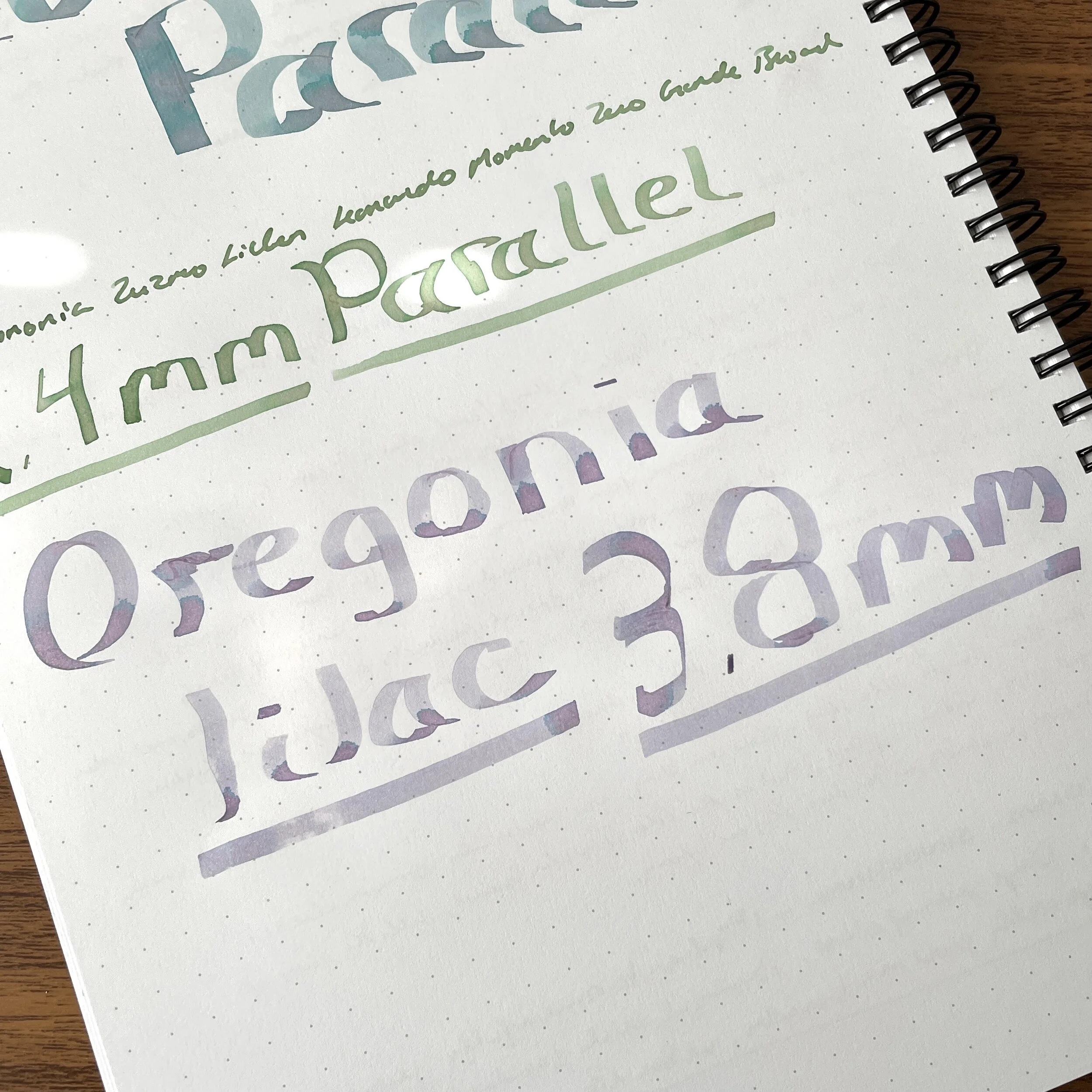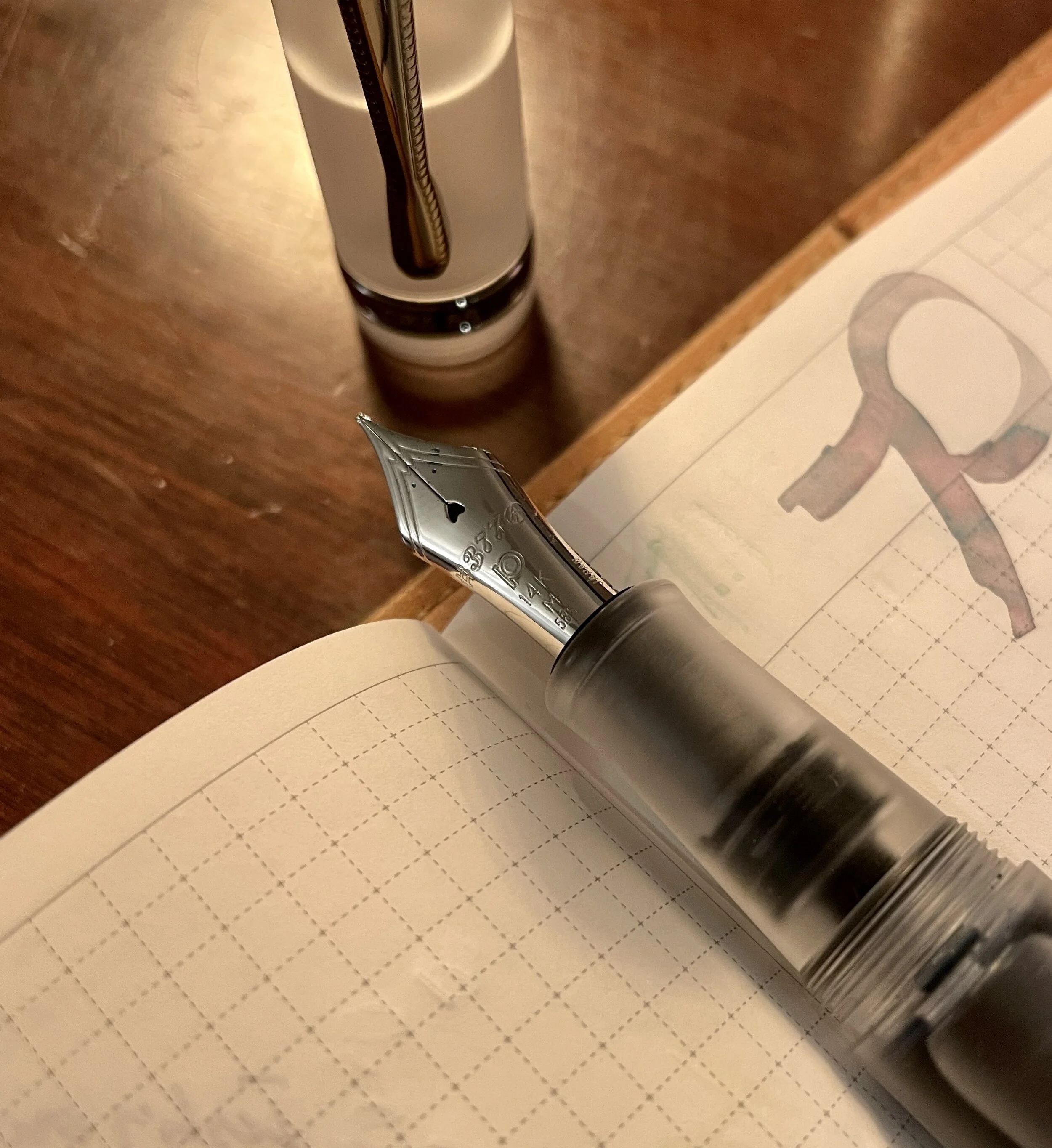What could be more fun than nature-themed inks created by scientists? Tampa, FL-based Anderillium Inks has been around for a few years, but I had never experienced their inks until this year’s Chicago Pen Show, where they had a table with two full ink series (“Cephalopod” and “Avian”) and all of their inks loaded into tester pens. I walked away with two: “Cuttlefish Brown” and “Shoebill Stork Grey”, one from each series, respectively.
I had read mixed reviews of early renditions of the Anderillium Inks from a few years ago. While people enjoyed the colors, some experienced feathering and other issues. I’m pleased to report that the two inks I purchased in Chicago are near-perfect: I love the colors, and they both behave quite well on even inexpensive office paper. The Cuttlefish Brown is the one I’ve written with the most, and it’s what I would consider a “true sepia,” meaning that it’s intended to mimic the look of actual cuttlefish ink that was traditionally used in vintage writing applications (minus the fishy smell, as Anderillium points out on their website).
Cuttlefish Brown was the ink that I chose for my other Chicago Pen Show Purchase, this Chicago Pen Company Sheba fountain pen (review forthcoming)!
It’s an inside pen-show joke that everybody comes to a show looking for an “authentic sepia”, but nobody actually has a clue what sepia is supposed to look like. Well, IMHO, this is it. Anderillium Cuttlefish Brown lays down a dark brown line, but as the ink dries it shifts to a subtle brownish-grey that I consider the hallmark of a true “sepia” color that you see in vintage writing samples and photographs.
Takeaways and Where to Buy
I’ve enjoyed using this Cuttlefish Brown ink, and the muted brown-grey tones are perfect for the office. This ink should see some serious use in my work pens. As of September 2022, You can purchase this ink and others directly from the T.G.S. Curated Shop, priced at $14.50 for a 1.5oz (approximately 45ml) bottle of ink. The Anderillium Ink bottles resemble jelly jars (in fact, they might be jelly jars), which means that for at least the first half of the bottle, you can easily refill larger-diameter pens with big nibs.
Anderillium mentions on their website that all of their inks are made in-house by their own resident chemist, without using animal products and with an eye to sustainability and environmental preservation. You can read more about the company, its practices, and even the artwork on the website and ink bottles here.
This post does not contain affiliate links, and I purchased the inks featured in this post with my own funds, for my own use. The Gentleman Stationer is supported by purchases from The T.G.S. Curated Shop and the T.G.S. Patreon Program. Be sure to check out our recently published 2021 Holiday Gift Guide!
